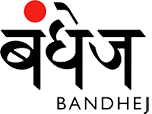
HANDCRAFTED, Sustainable Fashion
Currency

GYASAR: Brocades woven in Benares
 |
 |
| Brocades are opulent silk fabrics with embossed patterns in gold or silver. Benares brocade fabrics are woven on a pit loom using the inlay technique of interlacing multiple weft threads to create the pattern. Each region in the country has its own version of grand brocades that are used as wedding sarees and temple decorations, such as the asavali brocades from Gujarat, the temple sarees of Kanjeevaram, paithanis from Maharashtra, gulbadan brocades of Triuchirapalli and Tanjore, and Benaresi, the most coveted wedding sarees, as well as the elaborately patterned gyasars of Benares. |  |
For many generations, Haji Tafseer Ahmed Ansari’s family have been weaving intricate gyasar and other brocade fabrics for the Tibetan market. He lives and works from the Pili Kothi area, where many families wove the special gyasars for the monasteries, and ceremonial clothing for the Dalai Lama and high priests in Tibet. Around the 1950s, when China took over Tibet, the export of brocades from India was curtailed. Most of the weavers in this area switched to weaving sarees for the local market. Only Haji Shamshuddin Ansari (Tafseerbhai’s father), operating through their family firm, Kasim Arts, continued the tradition and today their business has expanded exponentially. They export these brocades to Tibet via Kathmandu and Mongolia. The high quality, elaborately patterned gyasar brocades are also used in clothing and home furnishings, and there is a growing demand for them from the fashion industry in India and overseas.
 |
Gyasar brocades are woven on a dense silk warp twenty-two inches in width, to a maximum length of three-and-a-half metres to maintain the tautness of the warp. The elaborate patterns are created in kadwa kaam, where multiple wefts are interlaced to create a pattern and, earlier, it needed two weavers to sit next to each other to manipulate the threads manually to create the patterns. Subsequently, the patterns were created with the help of a jala (harness) attached to the loom. A person at the back of the loom would manipulate the jala which acted as a master harness lifting and dropping the warp threads to a predetermined pattern. |
 |
 |
Today the jala has been replaced by a jacquard devise, and 6000 to 7000 jacquard cards are required to create a pattern. Some elaborate patterns use up to 10,000 cards. The Tibetan monks send old swatches to be replicated and the export of the gyasar than (a three-and-a-half-metre piece) has increased multiple fold in the last five years. A multi-coloured, elaborately patterned gyasar than in real zari (silver and gold thread) costs over Rs.1,00,000 today, while a similar piece in imitation zari would cost from Rs.13,000 to Rs.18,000. It is often difficult to distinguish between the two fabrics, but Tafseerbhai says that there is a growing market for both these qualities. They export over 300 gyasar thans and other brocade fabrics per month. I was very happy to observe that the quality of workmanship had significantly improved. Tafseerbhai explained, ‘We have the karigari (artistry), now there is a growing market and customer base that is willing to pay the price. So there is no compromise on quality,’










